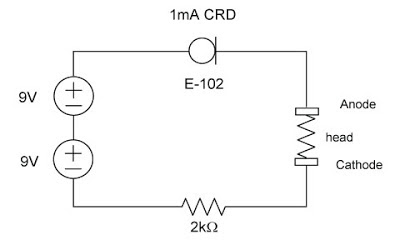Even though measuring from cranial landmarks is one way to find these points, I always question measuring on the head, or body, because of the size differences between people. Hence to make it easier to locate the points, below are numerous pictures.
Left Anode Dorsolateral Prefrontal Cortex (DLPFC)
The left is obviously the left side of the head, and the anode is the more positive of the two leads (green wire on the Cognitive kit); current goes from electronics to anode through the head to cathode back to the electronics. For the position of the DLPFC, check out the cranium below:And on me pointing and with a sponge electrode(see there is an advantage to having little hair, better tDCS montage location and better electrode connection).
Tag Archives: Keith Spaulding
The Cognitive Kit – a direct current device
The Cognitive Kit is a hand held Cognitive Enhancement Device. Simple to use, with safe, effective, sponge electrodes, the Cognitive Kit includes everything that is necessary for a cognitive enhancement session. We will be releasing the first production run in Mid July.
A little less Simple DIY TDCS circuit using CRDs | Insight
Regarding the transients at turn on, that is a circuit issue. So to remedy, it is easy to add an LC filter at the output see picture below for new schematic. The LC filter acts to dampen any transients. Bench testing shows the ramp up to be 500ms, which is plenty to dampen any turn on pulses, but unfortunately not enough to prevent any flash that occurs with certain montages. At mouser.com, the L can be 22R105C and the C can be UKL1E100KDDANA.
via Insight, a growth project driven by tDCS: A little less Simple DIY TDCS circuit using CRDs.
Insight, a growth project driven by tDCS: Simple DIY TDCS circuit using CRDs

via Insight, a growth project driven by tDCS: Simple DIY TDCS circuit using CRDs.



